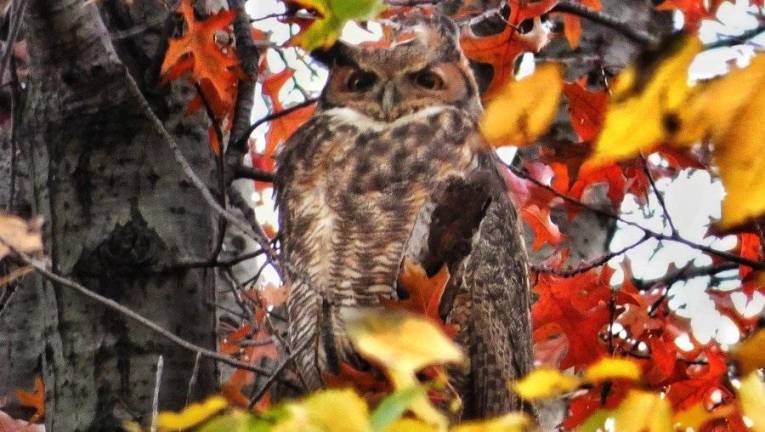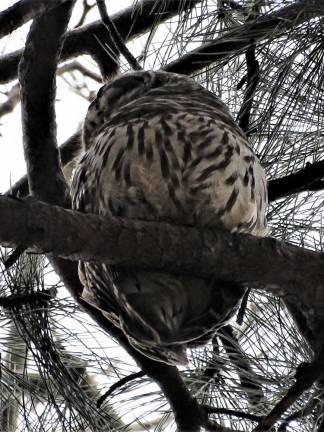The Birders of Central Park
Bird-watching groups ponder consequences of a second lockdown


Despite the ongoing impact of COVID-19, Central Park continues to provide unforgettable experiences for birders. From the rise in fame of Barred Owls and the sight-seeing colorful birds like the Argentinian Monk Parakeet, bird watching became a safe outside activity for New Yorkers. Birding by subway routes and birding via the Brooklyn Bridge might see lower numbers as many hold caution with coronavirus numbers reaching all-time highs.
New York City tallies more than 300 migratory and resident bird species—around a third of the North American total. With a second lockdown possibly in the near future, birders might not have access to prime bird watching locations or be able to join guided group trips.
Group birding, where people gather in large groups to map out the birding routes, might be limited or not allowed since it’s considered a large gathering. The Linnaean Society, one of the well-known groups for a bird walk, has group tours with a minimum of eight people and can go up to as much as 30.
According to David Barrett, who runs the well-known Manhattan Bird Alert Twitter page, many birders prefer to do the activity with groups, often led by a guide.
“Some groups already have ongoing limitations on group size, even for socially-distanced, masked birding walks,” Barrett said. “If group-birding is further restricted, or if people opt to avoid it because of perceived dangers, then we will see a decline in birding.”
Barrett mentioned that during the first lockdown in March, parks were one place New Yorkers felt safe and used as a way to still get outside. The biggest effect a second lockdown will have on the Central Park activity will be less birding.
“Some people simply won’t do it, other people will do it much less and will do it with greater care,” Barrett said. “That’s the biggest risk to birders. It’s not being out in the field, it’s the travels they need to do to get to where they want to go.”
Mayor Bill de Blasio on Thursday said that the city’s seven-day average positivity rate had risen to 5.2 percent, the highest it has been in six months. Barrett believes birders may go to areas within walking distance rather than hopping on the subway to bigger parks in Manhattan or Queens.
The New York Department of Parks and Recreation has not made any major decisions involving Central Park, as they continue a wait-and-see approach along with announcements from city administrators.
Megan Moriarty, press officer at NYC Department of Parks and Recreation (DPR), says it is too early to determine what decisions the department will make on Central Park. Moriarty referenced the DPR’s official statement via email on what the department has said about their response to future service changes within parks.
“During the crisis, it has become strikingly clear that parks are critical infrastructure,” said Moriarty. “They touch every facet of our city and play a role in health, safety, and community development. Our staff’s continued service demonstrates how committed we are to providing green spaces for all New Yorkers.”
Park restrooms, city playgrounds, fields and courts are still open.
The Central Park Conservancy, the non-profit organization that keeps the park clean and oversees its design, has announced the closing of a number of places within the park. Beginning the first week of December, the Great Lawn, East Meadow, Great Hill and the 86th-90th Street Landscape lawns will be closed for the season.
In a non-COVID-19 winter, these locations would normally close anyway. This is the time of year that the organization uses to keep up the park, stop foot traffic from trampling the grass and to allow things to recover. The number of birders also goes down with migration season in full swing.
Pam Chasek, a political science professor at Manhattan College, has been documenting nature -- with a focus on birds -- as a way to show positivity amid the pandemic. In return, on Day 257 of her “photo positivity series” Manhattan Bird Alert featured her photo of a Wild Turkey on Thanksgiving. Chasek does not see the second lockdown causing a huge change to birding.
“[During] lockdown, parks were still open and people in NYC could still go to parks as long as they wore masks and socially distanced,” Chasek said. “I don’t expect this to be a problem, to be honest. I started my positive photo series on March 15th just as everything was shutting down.”
Barrett added that what makes this year different than others is the rising popularity of specific birds. Finches are also quite rare, as they do not show up every year. Barrett says the Red Crossbill and Grosbeaks, species of finches, have not been showing up in Central Park. Ducks have also been a popular attraction in the winter months for the casual birder.
Birders just have to weigh the risk of travel in the coming months, to gauge how it affects their ability to see certain birds.
“They’re showing up in Brooklyn, Queens and sometimes in Long Island,” Barrett said. “They know the park is safe, they know walking the street is safe, but how safe is it going to be to take the subway or to take a bus? If there is a lockdown and the rate of infection starts to go [up], then maybe people say the subways aren’t so safe again and think, ‘Maybe I should only be going where I can walk to.’”
“That’s the biggest risk to birders. It’s not being out in the field, it’s the travels they need to do to get to where they want to go.” -- David Barrett, Manhattan Bird Alert